Introduction
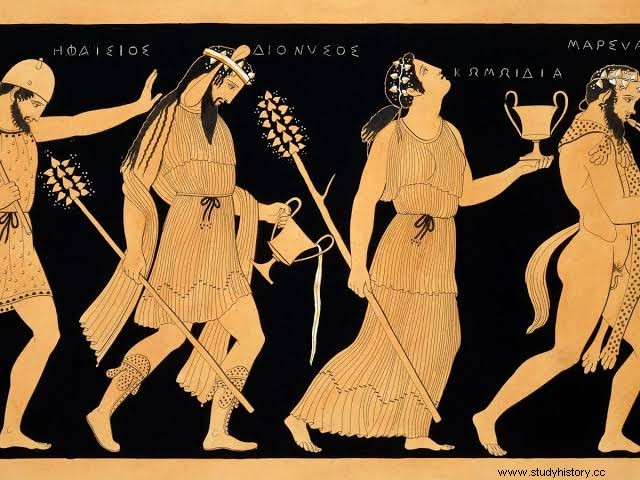
You may be wondering what Greek mythology is. Wonder no more. Greek mythology is a set of stories about gods, goddesses, heroes from the ancient Greeks. It was part of the religion of ancient Greece. So you could say it was part of everyday life. They explained everything, from religious rituals to weather. All while giving meaning to the world people saw around them. Greek mythology has always captured one's interest. Especially my own. It has since had an extensive influence on art and literature in Western civilization, which became the heir to much of Greek culture.
Historical factor

Although myths are completely invented, legends are based on events that really happened. The Greeks believed in gods and goddesses who they believed had control over all aspects of people's lives. The ancient Greeks believed that they had to pray to the gods for help and protection, because if the gods were dissatisfied with someone, they would punish them. They made special places in their homes and temples where they could pray to statues of the gods and leave gifts for them. The Greeks had another god for almost everything. They imagined that the gods lived together, as a family, on top of Olympus. They did not see them as perfect, but just as human beings. In Greek mythology, the gods argue, fall in love, get jealous of each other and make mistakes.
https://www.britica.com/topic/Greek-mythology
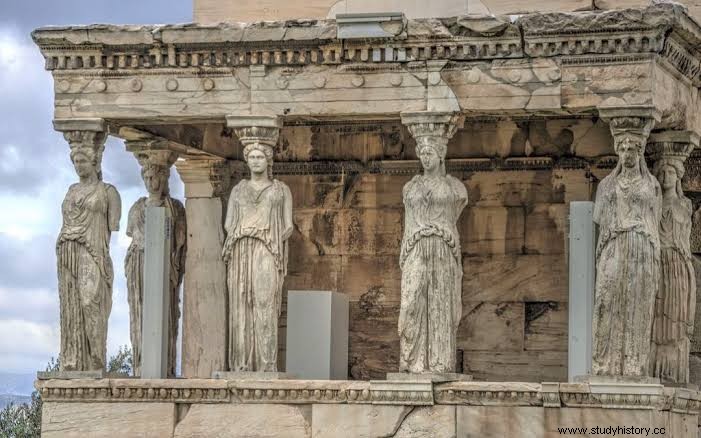
The 12 different Olympic gods and goddesses
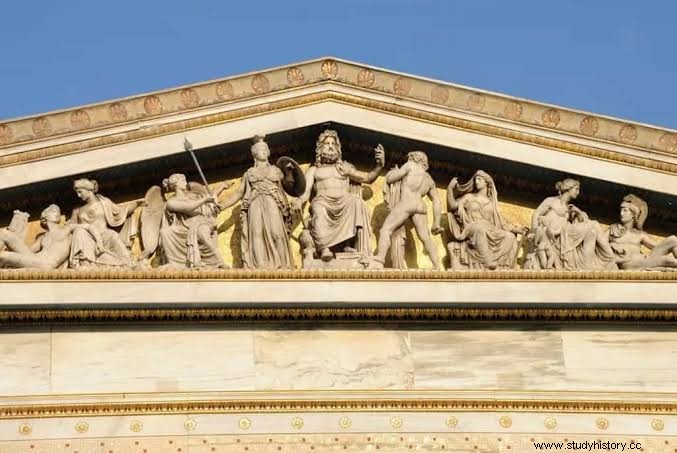
There are twelve main deities and goddesses descended from Olympus. Each so different from the past. Considered quite powerful, their stories are so inspiring. Here is a brief overview of the 12 gods and goddesses:
- Zeus - Zeus is the king of all gods, god of weather, law and destiny.
- Poseidon - the god of the sea.
- Hades - the god of the underworld.
- Ares - the god of war.
- Hephaestus - the god of fire, metalworking and sculpture.
- Apollo - the god of music, prophecy and poetry and knowledge.
- Aphrodite - the goddess of beauty and love.
- Artemis - goddess of hunting, animals and birth.
- Hera - Queen of the Gods and Goddesses. Also the woman's goddess and marriage. Hermes - God of travel, hospitality, commerce and Zeus' personal messenger.
- Hestia - the goddess of home and family.
- Athena - Goddess of Wisdom and Defense.
Influence of Greek mythology on art and literature
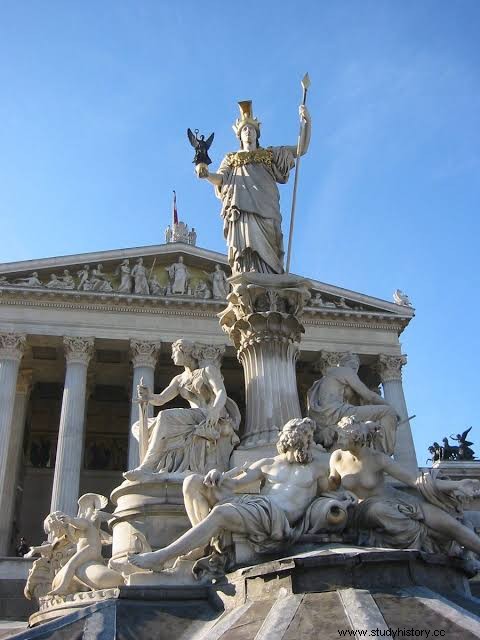
For thousands of years, Greek mythology has shaped art and literature. They appear in Renaissance paintings such as Botticellis' birth of Venus, writings such as Dante's inferno. Romantic poetry and recent novels, plays and films.
Art
Greek myths have inspired artists for centuries. Great painters and sculptors have used gods and heroes as motifs for their works. Creates the basis for the materials (stone, marble, limestone, clay) that we use today. This included pictures and going beyond the closed carpet to what is seen with the naked eye.
In two different periods, the sculptors went from capturing the movement of a human being to focusing on the connection to the artists' emotions. During the classical period of the Golden Age (480-323 BC), do you remember Alexander the Great? Well, that was in his time. Artists began to shape in a realistic way with the form now in action, in a relaxed state and even engaged in erotic acts of nature.
The Hellenistic period (323-31 BC). The Greeks began a journey in sculpture. Where they depicted people they had conquered. Their images were influenced by their culture and events that took place at that time. This, art began to tell stories, based on themes and violence.
Literature
Authors have retold ancient stories, sometimes in modern times. Filmmakers have also borrowed stories from ancient myths. Hercules, for example, has been the subject of dozens of films. These movies range from early classics to a Walt Disney cartoon.
Mythological references are also common in today's popular culture. Many sports teams have adopted the names of powerful figures from myths, such as titans or Trojans. Businesses often use images or symbols from mythology in advertising. Even though people no longer believe in the Greek gods, mythological ideas can still be seen around us.
Myths and Greek legends
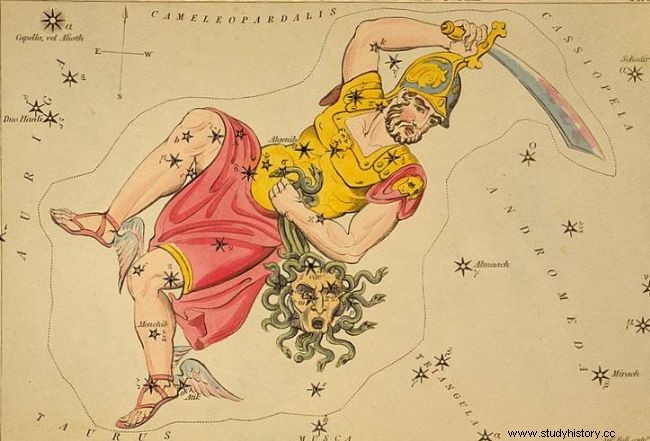
There are many famous Greek myths and legends. To this day, stories and movies are reused today! Som:
A woman, Pandora, opens a box full of all the bad things in the world and lets them out. Hercules is the most famous hero in Greek mythology and known for his twelve works. He was a demigod, the son of Zeus and the Alcmene.
Theseus and the Minotaur (a creature with the body of a man and the head of an ox) tell the story of a prince who chases a monster through a maze to save the woman he loves.
In another story, two inventors named Icarus and Daedalus try to build wings so that they can fly away from prison. Nor should we forget the three sisters of destiny. In Greek mythology, Moirae is the three goddesses of fate. Clotho, Lachesis and Atropos. The three sisters weave the destiny of both humans and gods. Neither man nor God has the power to influence or question their judgment and actions!
Perhaps the most exciting are Perseus and Gorgon, where a man named Perseus must kill a woman who can turn people to stone just by looking at them!
Death in Ancient Greek Times
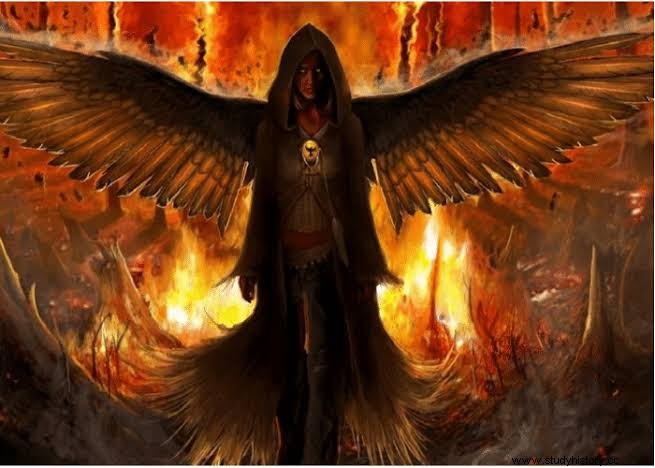
The Greeks believed that after death a soul went on a journey to a place called the underworld (which they called Hades). The steps in the journey are below:
First, Thanatos, the God of Death, would stretch down and cut the hair from your head while you were dying. Second, Hermes, the messenger of the god, led you to the river Styx. Third, Charon, the ferryman, carried you across the river if your body was buried. Fourth, on the banks of the river, you meet Cerberus, the three-headed dog that guards the underworld. His job was to stop people from leaving and returning to the world of the living.
Fifth, after crossing the river, you will leave the ferry and move on to a place called Asphodel Fields, where people forget all the memories of their past lives. And finally, at a fork in the road, three judges would decide where to send souls:good people were allowed to go on to Elysium (a pleasant place where the sun always shone), but those who had to be punished were sent to Tartarus. Sometimes, when the judges could not decide, souls were sent back to Asphodel Fields.
In Tartarus, people who had rebelled against the gods would receive terrible punishments. Tartarus was a dark place, imagined to be as far underground as the earth is from heaven.
Monsters of Greek mythology
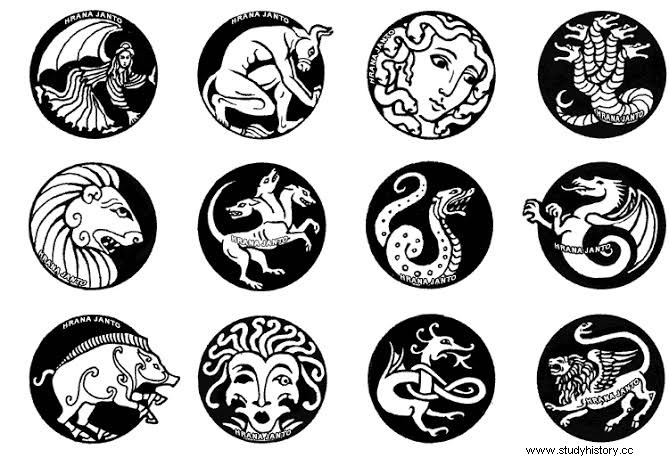
I would say that creatures are the most famous part of Greek mythology if we are to be honest. I mean who does not know about Pegasus, Phoenix, Unicorns and Griffins? Closely followed by the heroes.
Here are 10 of the most terrifying monsters in Greek mythology.
1. Typhoon
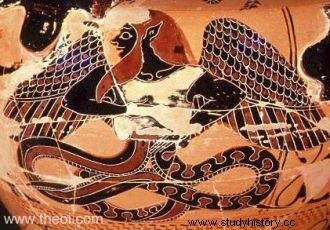
He became known as the "Father of All Monsters", and was born of Gaia (Earth) and Tartarus (Deep Hell). It is said that he was the most cruel creature that ever roamed the earth. Typhoon was massive. It was said that when he stood upright, he brushed his head against the stars. The lower half of his body consisted of two wrapped vipers that were constantly hissing. Instead of fingers, several dragon heads broke out of his hands. It is said that he had wings that, when scattered, could wipe out the sun. It burned fire from his eyes and struck fear into the heart of every living creature, even the mighty Olympians.
2. Medusa
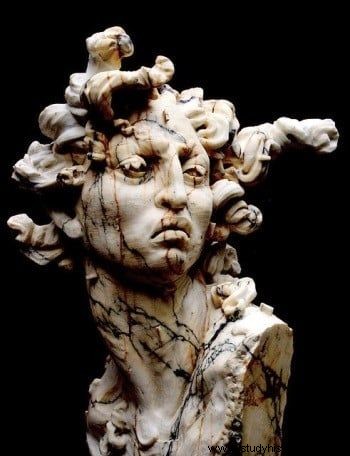
Medusa is a monstrous creature with the ability to stone for any person who looks at her face, and is still a popular monster in ancient mythology. Interpretations of Medusa are different. One aspect of Medusa that remains consistent through various legends is her hair, which is said to have consisted of twisting, poisonous snakes.
3. Minotaur
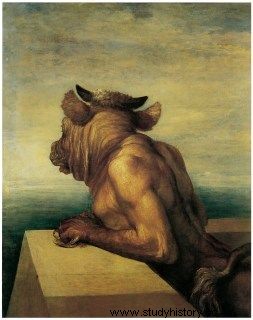
The Minotaur is a grotesque abomination that had the body of a man and the head of an ox, best remembered for its belonging to devouring flesh and its cryptic home, deep within the confines of the twisted labyrinth. The maze was an impossible maze constructed by the inventor Daedalus.
4.Cerberus
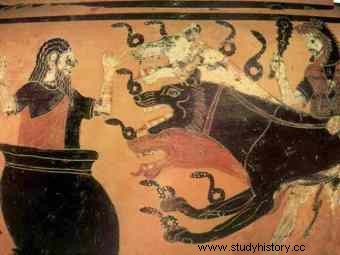
Cerberus is a popular creature in ancient mythology. Hade's loyal watchdog, Cerberus, was a massive hunting dog with three heads guarding the entrance to the underworld. It was said that the animal only had an appetite for living flesh, and that it would only let the deceased spirit pass, while he ate any living mortal that was stupid enough to come near him. It is said that the three heads were meant to symbolize past, present and future. In other versions of the myth, the three heads represent youth, adulthood, and old age.
5. Charybdis and Scylla
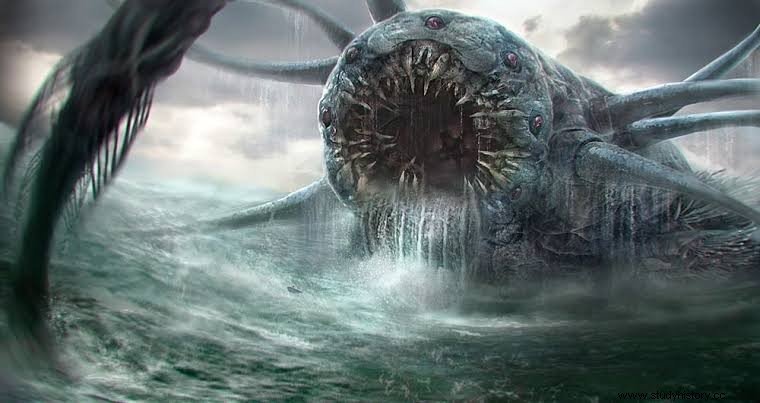
Charybdis is never explicitly described, other than to say that it is a violent sea monster that lives under a rock on one side of a narrow strait. Charybdis regularly swallow huge amounts of water creating monstrous whirlpools that are capable of destroying an entire ship.
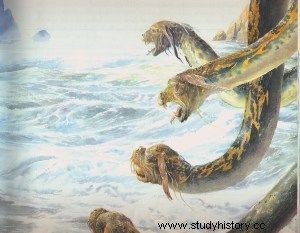
In the same way, Scylla lives on the opposite side of the narrow strait and is believed to have been many sea monsters that ate the flesh of sailors who inadvertently traveled too close to the animal's lair. The phrase "between a Charybdis and Scylla" is now understood to mean being stuck between two dangerous decisions without any obvious solution.
6. Hydraen
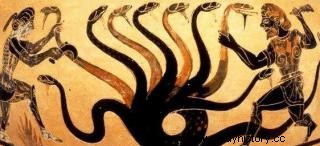
The deadly Hydra, a snake-like water monster with a reptile cover. A creature whose venom was so dangerous that even the breath exhaled by Hydra can be fatal to any man. In addition, Hydra has the confusing ability to re-grow all decapitated limbs at an alarming rate. For every head that was cut, two more grew instead.
7. Empusaen
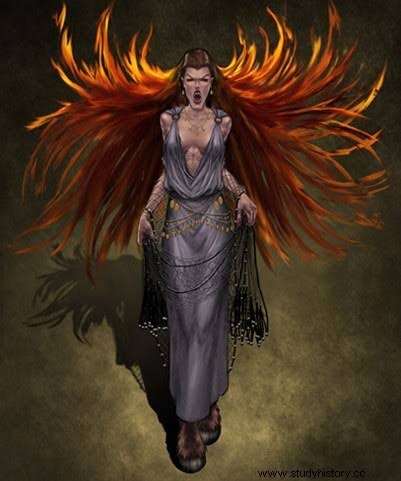
Unlike the other creatures on this list, Empusa may be little known and does not appear in any traditional epic or popular legend. But her frightening appearance and her dreadful tendency to enjoy human blood and flesh, guarantees more than her place as number seven on our list.
Empusa is often depicted as a beautiful woman, who transforms into a creature with sharp teeth, flaming hair and (in some interpretations) bat wings. Empusa was a demigod under the control of the goddess Hecate, a creature often associated with crossroads and entrances.
8. Chimera
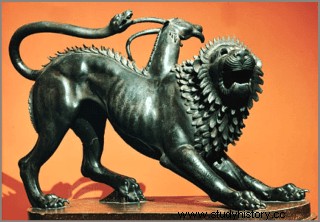
The Chimera was a cruel, fiery monstrosity that had the body and head of a lion with the head of a goat sticking out of its back and a snake for a tail. The monster was feared and believed to have been a sign of storms, shipwrecks and other natural disasters.
9. Cyclists
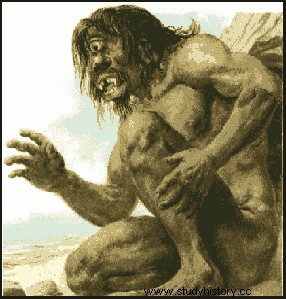
Cyclops were primordial giants born of Gaia, the earth. They have great strength and cruelty, with one bulging eye protruding from the forehead.
10. The Sphinx
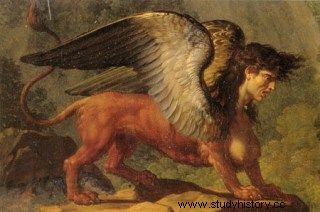
A monster that is said to have the body of a lion, the head of a woman and the wings of an eagle.
The Importance of Greek Mythology in Culture
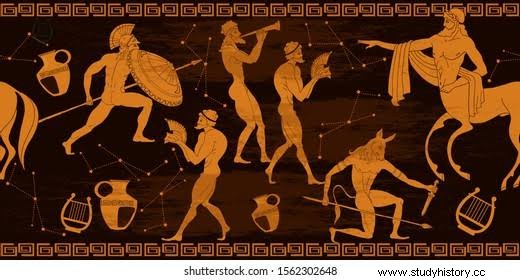
Finally, one can see what impact Greek mythology has had on our daily lives. Whether it's in our art literature or brands, or even certain words in our vocabulary. It is definitely visible. Although most of Greek mythology may be myths and legends. It still helps one to understand certain things in the world by using science, or simple stories with important morals to help us with a variety of situations. I do not know about you, but there is something about ancient Greek history that just piqued my interest. Hopefully, after reading this article, it has ignited something inside you or even learned a bit from ancient Greek mythology.
Did you know this?
Many consumer products get their names from Greek mythology. Nike sneakers are the namesake of, for example, the goddess of victory, and the website Amazon.com is named after the mythical female warriors. Many high schools, colleges, and professional sports teams (such as the Titans, Spartans, and Trojans) also get their names from mythological sources.
